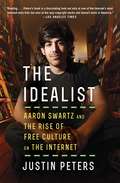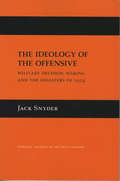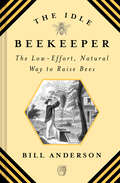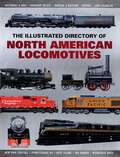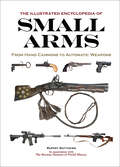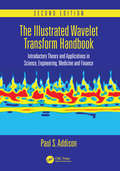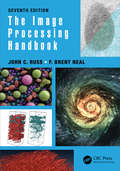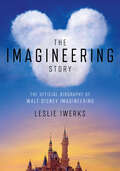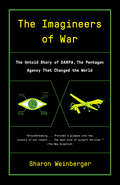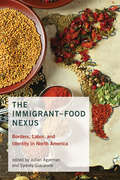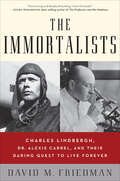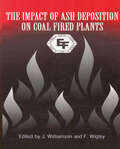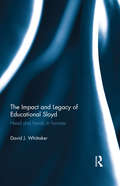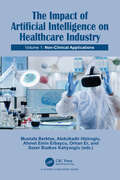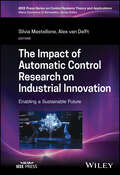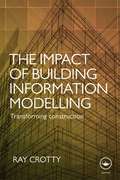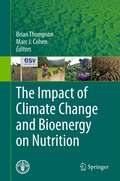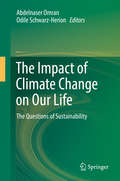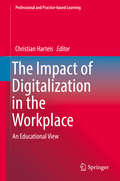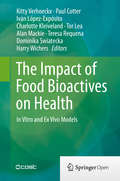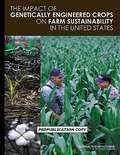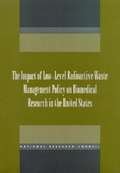- Table View
- List View
The Idealist
by Justin PetersA smart, lively history of the Internet free culture movement and its larger effects on society--and the life and shocking suicide of Aaron Swartz, a founding developer of Reddit and Creative Commons--from Slate correspondent Justin Peters.Aaron Swartz was a zealous young advocate for the free exchange of information and creative content online. He committed suicide in 2013 after being indicted by the government for illegally downloading millions of academic articles from a nonprofit online database. From the age of fifteen, when Swartz, a computer prodigy, worked with Lawrence Lessig to launch Creative Commons, to his years as a fighter for copyright reform and open information, to his work leading the protests against the Stop Online Piracy Act (SOPA), to his posthumous status as a cultural icon, Swartz's life was inextricably connected to the free culture movement. Now Justin Peters examines Swartz's life in the context of 200 years of struggle over the control of information. In vivid, accessible prose, The Idealist situates Swartz in the context of other "data moralists" past and present, from lexicographer Noah Webster to ebook pioneer Michael Hart to NSA whistleblower Edward Snowden. In the process, the book explores the history of copyright statutes and the public domain; examines archivists' ongoing quest to build the "library of the future"; and charts the rise of open access, copyleft, and other ideologies that have come to challenge protectionist IP policies. Peters also breaks down the government's case against Swartz and explains how we reached the point where federally funded academic research came to be considered private property, and downloading that material in bulk came to be considered a federal crime. The Idealist is an important investigation of the fate of the digital commons in an increasingly corporatized Internet, and an essential look at the impact of the free culture movement on our daily lives and on generations to come.
The Idealist: Aaron Swartz and the Rise of Free Culture on the Internet
by Justin PetersThis smart, “riveting” (Los Angeles Times) history of the Internet free culture movement and its larger effects on society—and the life and shocking suicide of Aaron Swartz, a founding developer of Reddit and Creative Commons—written by Slate correspondent Justin Peters “captures Swartz flawlessly” (The New York Times Book Review).Aaron Swartz was a zealous young advocate for the free exchange of information and creative content online. He committed suicide in 2013 after being indicted by the government for illegally downloading millions of academic articles from a nonprofit online database. From the age of fifteen, when Swartz, a computer prodigy, worked with Lawrence Lessig to launch Creative Commons, to his years as a fighter for copyright reform and open information, to his work leading the protests against the Stop Online Piracy Act (SOPA), to his posthumous status as a cultural icon, Swartz’s life was inextricably connected to the free culture movement. Now Justin Peters examines Swartz’s life in the context of 200 years of struggle over the control of information. In vivid, accessible prose, The Idealist situates Swartz in the context of other “data moralists” past and present, from lexicographer Noah Webster to ebook pioneer Michael Hart to NSA whistleblower Edward Snowden. In the process, the book explores the history of copyright statutes and the public domain; examines archivists’ ongoing quest to build the “library of the future”; and charts the rise of open access, the copyleft movement, and other ideologies that have come to challenge protectionist intellectual property policies. Peters also breaks down the government’s case against Swartz and explains how we reached the point where federally funded academic research came to be considered private property, and downloading that material in bulk came to be considered a federal crime. The Idealist is “an excellent survey of the intellectual property battlefield, and a sobering memorial to its most tragic victim” (The Boston Globe) and an essential look at the impact of the free culture movement on our daily lives and on generations to come.
The Ideological War on Terror: Worldwide Strategies For Counter-Terrorism (Political Violence)
by Graeme P. Herd Anne AldisThis edited book addresses the appropriateness of US and other counter-terrorist (CT) strategies in Europe and Eurasia, the Middle East, the Asia Pacific region and in Latin America, with a view to improving their effectiveness. The book has three main objectives: to re-examine terrorists' strategic goals and sources of legitimacy and the nature of their ideological support to analyze current US and regional CT strategies and assess their success in de-legitimizing terrorists and undermining their support to provide a strategic synthesis and policy recommendations in light of the research findings. This book will be of interest to students of political violence and terrorism, security studies and international relations in general.
The Ideology of the Offensive
by Jack SnyderJack Snyders analysis of the attitudes of military planners in the years prior to the Great War offers new insight into the tragic miscalculations of that era and into their possible parallels in present-day war planning. By 1914, the European military powers had adopted offensive military strategies even though there was considerable evidence to support the notion that much greater advantage lay with defensive strategies. The author argues that organizational biases inherent in military strategists attitudes make war more likely by encouraging offensive postures even when the motive is self-defense. Drawing on new historical evidence of the specific circumstances surrounding French, German, and Russian strategic policy, Snyder demonstrates that it is not only rational analysis that determines strategic doctrine, but also the attitudes of military planners. Snyder argues that the use of rational calculation often falls victim to the pursuit of organizational interests such as autonomy, prestige, growth, and wealth. Furthermore, efforts to justify the preferred policy bring biases into strategists decisions biases reflecting the influences of parochial interests and preconceptions, and those resulting from attempts to simplify unduly their analytical tasks. The frightening lesson here is that doctrines can be destabilizing even when weapons are not, because doctrine may be more responsive to the organizational needs of the military than to the implications of the prevailing weapons technology. By examining the historical failure of offensive doctrine, Jack Snyder makes a valuable contribution to the literature on the causes of war.
The Idle Beekeeper: The Low-Effort, Natural Way to Raise Bees
by Bill AndersonFrom building a hive to harvesting honey, a top urban beekeeper shares how to care for bees the simple, mindful way. Global bee populations have been rapidly declining for years, and it’s not just our honey supply that’s at stake: the contribution of bees to the pollination of crops is essential to human survival. But even in industrial apiaries, bees are in distress, hiving in synthetic and hostile environments. Enter idle beekeeping: the grassroots, low-intervention system that seeks to emulate the behavior and habitat of bees in the wild—and it only requires two active days of beekeeping per year, one in the spring and another in the fall. In The Idle Beekeeper, Bill Anderson calls upon his years of applied curiosity as an urban beekeeper to celebrate these underappreciated insects and show how simple and rewarding beekeeping can be. In this entertaining, philosophical, and practical guide, Anderson shares why and how to build a hive system that is both cutting-edge and radically old. Maximum idleness is achieved through step-by-step directions to help the beekeeper gently harvest honey with minimum effort, make mead and beeswax candles, and closely observe and understand these fascinating and productive social creatures. For anyone interested in keeping bees, The Idle Beekeeper is the definitive guide to getting started, even in a city, and without effort.
The Illustrated Directory of North American Locomotives: The Story and Progression of Railroads from The Early Days to The Electric Powered Present
by Pepperbox PressMore than 250 classic American locomotives."Let the country but make the railroads, and the railroads will make the country." — Edward PeaseDuring the mid-1800s, American railroads became the lifeblood of new communities in the West and brought new ways of life and means of commerce to rural communities. Railroads became the shining thread that tied together the tapestry of American life into a land of plenty. The Illustrated Dictionary of North American Locomotives explores the story of railroads and their motive power. Giant beasts of iron and steel once roamed the land. Their descendants still race across the country.This book charts the progress of motive power on America's railroads from 1830 until the present. Its 432 pages illustrate a wide variety of grand and humble locomotives from the steam powered Puffing Billy types of the "Early Days" chapter, to the mighty Allegheny class steamers that were used to haul coal for the American industry in the "Steam in Charge" chapter. Technical specifications are given for each engine type and the book is fully illustrated with both black & white and color photos. The book goes on to show the progress of Diesel Power, including the output of General Electric and General Motors electromotive division (EMD) from the 1920s to the present. Ultimately, the book also explores the Electric Power that powers so many of today's railways.
The Illustrated Encyclopedia of Outer Space: An A to Z Guide to Facts and Figures
by Diego Mattarelli Emanuela PagliariAstronauts, rockets, and stars—oh my! Learn everything about outer space from A to Z! This isn&’t your normal alphabet book. Instead of reading about apples and zebras, your child can learn planets and galaxies! Each letter in this fun alphabet book pertains to an important topic that explores space and space travel. Packed with information and curiosities, children will learn about: Black holesMeteorsSpace StationsOrbitsRocket scientistsAnd more! Kids get enough of simple words in school and not all kids are interested in the alphabet and reading. Pique their interest with this colorful, illustrated book that they will be wanting to read again and again. Encourage your kids to learn their alphabet by associating fun facts about space to each letter. After reading this picture book, young readers will be able to say with confidence that they know space from A to Z!
The Illustrated Encyclopedia of Small Arms: From Hand Cannons to Automatic Weapons
by Rupert MatthewsThis comprehensive, fully illustrated reference volume covers the evolution of small arms from primitive spears to portable rocket launchers.The Illustrated Encyclopedia of Small Arms details more than 1,000 weapons, complete with full-color photographs. Featuring arms from around the world and across history, this stunning guide highlights the intricacies that make each variety unique, tying in historical anecdotes as well as the history of certain brands. Revealing fascinating insights and historical episodes—such as the inspiration for Samuel L. Colt&’s revolvers, or the lozenge-case gun used by Italian spies during World War II—this is an ideal resource for historians as well as fire arms enthusiasts. The volume is lushly illustrated with detailed photographs, many of which are published here for the first time.
The Illustrated Wavelet Transform Handbook: Introductory Theory and Applications in Science, Engineering, Medicine and Finance, Second Edition
by Paul S. AddisonThis second edition of The Illustrated Wavelet Transform Handbook: Introductory Theory and Applications in Science, Engineering, Medicine and Finance has been fully updated and revised to reflect recent developments in the theory and practical applications of wavelet transform methods. The book is designed specifically for the applied reader in science, engineering, medicine and finance. Newcomers to the subject will find an accessible and clear account of the theory of continuous and discrete wavelet transforms, while readers already acquainted with wavelets can use the book to broaden their perspective. One of the many strengths of the book is its use of several hundred illustrations, some in colour, to convey key concepts and their varied practical uses. Chapters exploring these practical applications highlight both the similarities and differences in wavelet transform methods across different disciplines and also provide a comprehensive list of over 1000 references that will serve as a valuable resource for further study. Paul Addison is a Technical Fellow with Medtronic, a global medical technology company. Previously, he was co-founder and CEO of start-up company, CardioDigital Ltd (and later co-founded its US subsidiary, CardioDigital Inc) - a company concerned with the development of novel wavelet-based methods for biosignal analysis. He has a master’s degree in engineering and a PhD in fluid mechanics, both from the University of Glasgow, Scotland (founded 1451). His former academic life as a tenured professor of fluids engineering included the output of a large number of technical papers, covering many aspects of engineering and bioengineering, and two textbooks: Fractals and Chaos: An Illustrated Course and the first edition of The Illustrated Wavelet Transform Handbook. At the time of publication, the author has over 100 issued US patents concerning a wide range of medical device technologies, many of these concerning the wavelet transform analysis of biosignals. He is both a Chartered Engineer and Chartered Physicist.
The Image Processing Handbook
by John C. Russ F. Brent NealConsistently rated as the best overall introduction to computer-based image processing, The Image Processing Handbook covers two-dimensional (2D) and three-dimensional (3D) imaging techniques, image printing and storage methods, image processing algorithms, image and feature measurement, quantitative image measurement analysis, and more.Incorporating image processing and analysis examples at all scales, from nano- to astro-, this Seventh Edition: Features a greater range of computationally intensive algorithms than previous versions Provides better organization, more quantitative results, and new material on recent developments Includes completely rewritten chapters on 3D imaging and a thoroughly revamped chapter on statistical analysis Contains more than 1700 references to theory, methods, and applications in a wide variety of disciplines Presents 500+ entirely new figures and images, with more than two-thirds appearing in color The Image Processing Handbook, Seventh Edition delivers an accessible and up-to-date treatment of image processing, offering broad coverage and comparison of algorithms, approaches, and outcomes.
The Imagineering Story (Disney Editions Deluxe)
by Leslie IwerksThe highly acclaimed and rated Disney+ documentary series, The Imagineering Story, becomes a book that greatly expands the award-winning filmmaker Leslie Iwerks' narrative of the fascinating history of Walt Disney Imagineering.The entire legacy of WDI is covered from day one through future projects with never-before-seen access and insights from people both on the inside and on the outside. So many stories and details were left on the cutting room floor―this book allows an expanded exploration of the magic of Imagineering. So many insider stories are featured. ° Sculptor Blaine Gibson’s wife used to kick him under the table at restaurants for staring at interesting-looking people seated nearby, and he’d even find himself studying faces during Sunday morning worship. “You mean some of these characters might have features that are based on people you went to church with?” Marty Sklar once asked Gibson of the Imagineer's sculpts for Pirates of the Caribbean. “He finally admitted to me that that was true.”° In the early days, Walt Disney Imagineering "was in one little building and everybody parked in the back and you came in through the model shop, and you could see everything that was going on,” recalled Marty Sklar. “When we started on the World’s Fair in 1960 and 1961, we had 100 people here. And so everybody knew everything about what was happening and the status of [each] project, so you really felt like you were part of the whole team whether you were working on that project or not. And, you know, there was so much talent here.” A must-have for Disney Parks fans!Searching for that perfect gift for the #1 Disney fan in your life? Explore more behind-the-scenes stories from Disney Editions:One Little Spark! Mickey's Ten Commandments and The Road to Imagineering (By Disney Legend Marty Sklar)Magic Journey: My Fantastical Walt Disney Imagineering Career (By Kevin Rafferty)Travels with Walt Disney: A Photographic Voyage Around the World (By Jeff Kurtti)Eat Like Walt: The Wonderful World of Disney Food (By Marcy Carriker Smothers)Walt Disney: An American Original (By Bob Thomas)Disney A to Z: The Official Encyclopedia, Fifth Edition (By Disney Legend Dave Smith)
The Imagineers of War: The Untold Story of DARPA, the Pentagon Agency That Changed the World
by Sharon WeinbergerThe definitive history of the Defense Advanced Research Projects Agency, the Pentagon agency that has quietly shaped war and technology for nearly sixty years.Founded in 1958 in response to the launch of Sputnik, the agency’s original mission was to create “the unimagined weapons of the future.” Over the decades, DARPA has been responsible for countless inventions and technologies that extend well beyond military technology. Sharon Weinberger gives us a riveting account of DARPA’s successes and failures, its remarkable innovations, and its wild-eyed schemes. We see how the threat of nuclear Armageddon sparked investment in computer networking, leading to the Internet, as well as to a proposal to power a missile-destroying particle beam by draining the Great Lakes. We learn how DARPA was responsible during the Vietnam War for both Agent Orange and the development of the world’s first armed drones, and how after 9/11 the agency sparked a national controversy over surveillance with its data-mining research. And we see how DARPA’s success with self-driving cars was followed by disappointing contributions to the Afghanistan and Iraq wars.Weinberger has interviewed more than one hundred former Pentagon officials and scientists involved in DARPA’s projects—many of whom have never spoken publicly about their work with the agency—and pored over countless declassified records from archives around the country, documents obtained under the Freedom of Information Act, and exclusive materials provided by sources. The Imagineers of War is a compelling and groundbreaking history in which science, technology, and politics collide.
The Immigrant-Food Nexus: Borders, Labor, and Identity in North America (Food, Health, and the Environment)
by Julian Agyeman Sydney GiacaloneThe intersection of food and immigration in North America, from the macroscale of national policy to the microscale of immigrants' lived, daily foodways.This volume considers the intersection of food and immigration at both the macroscale of national policy and the microscale of immigrant foodways—the intimate, daily performances of identity, culture, and community through food. Taken together, the chapters—which range from an account of the militarization of the agricultural borderlands of Yuma, Arizona, to a case study of Food Policy Council in Vancouver, Canada—demonstrate not only that we cannot talk about immigration without talking about food but also that we cannot talk about food without talking about immigration.The book investigates these questions through the construct of the immigrant-food nexus, which encompasses the constantly shifting relationships of food systems, immigration policy, and immigrant foodways. The contributors, many of whom are members of the immigrant communities they study, write from a range of disciplines. Three guiding themes organize the chapters: borders—cultural, physical, and geopolitical; labor, connecting agribusiness and immigrant lived experience; and identity narratives and politics, from “local food” to “dietary acculturation.”ContributorsJulian Agyeman, Alison Hope Alkon, FernandoJ. Bosco, Kimberley Curtis, Katherine Dentzman, Colin Dring, Sydney Giacalone, Sarah D. Huang, Maryam Khojasteh, Jillian Linton, Pascale Joassart-Marcelli, Samuel C. H. Mindes, Laura-Anne Minkoff-Zern, Christopher Neubert, Fabiola Ortiz Valdez, Victoria Ostenso, Catarina Passidomo, Mary Beth Schmid, Sea Sloat, Kat Vang, Hannah Wittman, Sarah Wood
The Immortalists: Charles Lindbergh, Dr. Alexis Carrel, and Their Daring Quest to Live Forever
by David M. FriedmanHis historic career as an aviator made Charles Lindbergh one of the most famous men of the twentieth century, the subject of best-selling biographies and a hit movie, as well as the inspiration for a dance step—the Lindy Hop—that he himself was too shy to try. But for all the attention lavished on Lindbergh, one story has remained untold until now: his macabre scientific collaboration with Dr. Alexis Carrel. This oddest of couples—one a brilliant Nobel Prize-winning surgeon turned social engineer, the other a failed dirt farmer turned hero of the skies—joined forces in 1930 driven by a shared and secret dream: to conquer death and attain immortality.Part Frankenstein, part The Professor and the Madman, and all true, The Immortalists is the remarkable story of how two men of prodigious achievement and equally large character flaws challenged nature's oldest rule, with consequences—personal, professional, and political—that neither man anticipated.
The Impact Of Ash Deposition On Coal Fired Plants: Proceedings of the Engineering Foundation Conference Held at the St. John's Swallow Hotel, Solihull, England
by Jim WilliamsonCoal provides almost 40% of the world's electricity, and despite the understandable concern with respect to the environmental impact associated with coal use, forecasts from the International Energy Agency predict, that worldwide coal use will increase by up to 2% per annum until the year 2OlO. Faced with this increase, it is clearly important that the most efficient and environmentally acceptable clean coal technologies are available. This book is comprised of the proceedings of the Engineering Foundation Conference held in June 1993 in England. The objective of the conference was to present ideas on methods of predicting and reducing the effects of ash deposition in coal conversion systems, highlighting the problems experienced in industry, considering both utilities and industrial plants, and providing a view of the technology of coal ash deposition and its impact. Better techniques are needed to reduce the impact of ash deposition in coal fired plants, and these proceedings should form a reference document for anyone either experiencing slagging or actively engaged in trying to understand or eliminate the phenomenon.
The Impact and Legacy of Educational Sloyd: Head and hands in harness
by David J. WhittakerOriginating in Finland in eighteen-sixty-five, Educational Sloyd used handicrafts practised in schools to promote educational completeness through the interdependence of the mind and body. These radical ideas spread throughout Europe and America and had a significant impact on the early development of manual training, manual arts, industrial education and technical education. Today it is generally acknowledged that Educational Sloyd laid the foundations of modern technological education. This book traces the development of Sloyd from its conception by Uno Cygnaeus and the first Sloyd school founded by Otto Salomon, to its enthusiastic take up in Scandinavia and beyond. It examines the debates and controversy which surround the Sloyd system, and considers the transition from ‘hands-on’ craft work to concepts of technology education. Finally, the investigation reveals the lasting legacy of the ideas and practice of Sloyd education, and how it continues to influence technological education. Included in the book: - the foundations of Educational Sloyd - debates, controversy and rival factions - key case studies in Finland and Iceland - the lasting legacy of Sloyd education. This fascinating and comprehensive historical exploration will be of interest to scholars and researchers in the areas of technology education, comparative education and the history of education.
The Impact of Artificial Intelligence on Healthcare Industry: Volume 1: Non-Clinical Applications
by Sezer Bozkus Kahyaoglu Mustafa Berktas Abdulkadir Hiziroglu Ahmet Emin Erbaycu Orhan ErHealthcare and medical science are inherently dependent on technological advances and innovations for improved care. In recent times we have witnessed a new drive in implementing these advances and innovations through the use of Artificial Intelligence, in both clinical and non-clinical areas.The set of 2 volumes aims to make available the latest research and applications to all, and to present the current state of clinical and non-clinical applications in the health sector and areas open to development, as well as to provide recommendations to policymakers. This volume covers non-clinical applications. The chapters covered in this book have been written by professionals who are experts in the healthcare sector and have academic experience.
The Impact of Automatic Control Research on Industrial Innovation: Enabling a Sustainable Future (IEEE Press Series on Control Systems Theory and Applications)
by Silvia Mastellone Alex Van DelftThe Impact of Automatic Control Research on Industrial Innovation Bring together the theory and practice of control research with this innovative overview Automatic control research focuses on subjects pertaining to the theory and practice of automation science and technology subjects such as industrial automation, robotics, and human???machine interaction. With each passing year, these subjects become more relevant to researchers, policymakers, industrialists, and workers alike. The work of academic control researchers, however, is often distant from the perspectives of industry practitioners, creating the potential for insights to be lost on both sides. The Impact of Automatic Control Research on Industrial Innovation seeks to close this distance, providing an industrial perspective on the future of control research. It seeks to outline the possible and ongoing impacts of automatic control technologies across a range of industries, enabling readers to understand the connection between theory and practice. The result is a book that combines scholarly and practical understandings of industrial innovations and their possible role in building a sustainable world. The Impact of Automatic Control Research on Industrial Innovation readers will also find: Insights on industrial and commercial applications of automatic control theory. Detailed discussion of industrial sectors including power, automotive, production processes, and more. An applied research roadmap for each sector. This book is a must-own for both control researchers and control engineers, in both theoretical and applied contexts, as well as for graduate or continuing education courses on control theory and practice.
The Impact of Building Information Modelling: Transforming Construction
by Ray CrottyConstruction projects involve a complex set of relationships, between parties with different professional backgrounds trying to achieve a very complex goal. Under these difficult circumstances, the quality of information on which projects are based should be of the highest possible standard. The line-based, two dimensional drawings on which conventional construction is based render this all but impossible. This is the source of some major shortcomings in the construction industry, and this book focuses on the two most fundamental of these: the failure to deliver projects predictably: to the required quality, on time and within budget; and the failure of most firms in the industry to make a survivable level of profit. By transforming the quality of information used in building, BIM aims to transform construction completely.After describing and explaining these problems, the way in which BIM promises to provide solutions is examined in detail. A discussion of the theory and practice of BIM is also provided, followed by a review of various recent surveys of BIM usage in the US, UK and selected European economies. The way in which other industries, including retail and manufacturing, have been transformed by information are explored and compared with current developments in the deployment of BIM in construction. Five case studies from the UK show how BIM is being implemented, and the effects it is having on architects and contractors.This book is perfect for any construction professional interested in improving the efficiency of their business, as well as undergraduate and postgraduate students wishing to understand the importance of BIM.
The Impact of Climate Change and Bioenergy on Nutrition
by Brian Thompson Marc J CohenClimate changes will affect food production in a number of ways. Crop yields, aquatic populations and forest productivity will decline, invasive insect and plant species will proliferate and desertification, soil salinization and water stress will increase. Each of these impacts will decrease food and nutrition security, primarily by reducing access to and availability of food, and also by increasing the risk of infectious disease. Although increased biofuel demand has the potential to increase incomes among producers, it can also negatively affect food and nutrition security. Land used for cultivating food crops may be diverted to biofuel production, creating food shortages and raising prices. Accelerations in unregulated or poorly regulated foreign direct investment, deforestation and unsustainable use of chemical fertilizers may also result. Biofuel production may reduce women's control of resources, which may in turn reduce the quality of household diets. Each of these effects increases risk of poor food and nutrition security, either through decreased physical availability of food, decreased purchasing power, or increased risk of disease. The Impact of Climate Change and Bioenergy on Nutrition articulates the links between current environmental issues and food and nutrition security. It provides a unique collection of nutrition statistics, climate change projections, biofuel scenarios and food security information under one cover which will be of interest to policymakers, academia, agronomists, food and nutrition security planners, programme implementers, health workers and all those concerned about the current challenges of climate change, energy production, hunger and malnutrition.
The Impact of Climate Change on Our Life: The Questions Of Sustainability
by Odile Schwarz-Herion Abdelnaser OmranThis book introduces the highly topical issue from many different angles, sensitizing readers to the various challenges to human life posed by climate change, identifying possible intentional and inadvertent anthropogenic factors and consequences, and seeking socially and environmentally viable solutions. The book begins by examining the impact of the climate change discussion on science, politics, economy and culture – from its historical origin in the first Club of Rome Report and its inclusion in the UN's SDGs to the Paris Agreement and beyond. Comprising 12 chapters, it analyses the factors which caused the catastrophic 2014 Kelantan flood in Malaysia, focusing on the Kuala Krai district and discusses mud architecture in Wadi Hadramout, Yemen and mitigating the expected effects of climate change on this unique architecture and cultural heritage. It also examines the economic costs of climate change on health and the increased burden on individual expenditures and national health systems. The role of climate change in the water-energy nexus and efforts to increase efficiency in energy and water end-use to increase Queensland’s agricultural sector’s resilience in Australia is addressed, as is water security and climate change issues in developing countries and the potential of partnership procurement strategies for managing sustainable urban water supply in Nigerian cities. It also includes a chapter offering a new approach to waste management, exploring to what extent waste can complicate our daily actions and influence environmental decay, and recommending that renewable materials be sorted and separated from other types of materials to avoid cross-contamination, to increase the value of the materials, and to ease the process of manufacturing. Subsequent chapters identify factors sustaining the municipal solid waste management and practices in Ajdabiya city in Libya, and look at accounting disclosure remedies by exploring areas in which sustainability reporting could expand beyond corporate environmental reporting to additional disclosures, curbing recklessness in pursuing merely economic goals. The book shows – from the perspective of agriculture – how human activities can increase the negative impacts of climate change on lifestyle in Malaysia, suggesting alternative lifestyles and encouraging international cooperative efforts. The last chapters evaluate the impacts of various environmental factors on the local tourism sector in Pakistan, and discuss strategies to tackle climate change, focusing on the opportunities and risks of climate engineering. Since these risks encompass inadvertent negative effects and targeted abuse for covert weather warfare and terrorism that violate the UN’s ENMOD convention, the author recommends viable alternatives to deal with climate change.
The Impact of Digitalization in the Workplace: An Educational View (Professional and Practice-based Learning #21)
by Christian HarteisThis edited volume brings together researchers from various disciplines (i.e. education, psychology, sociology, economy, information technology, engineering) discussing elementary changes at workplaces occurring through digitalization, and reflecting on educational challenges for individuals, organizations, and society. The latest developments in information and communication technology seem to open new potential, and the crucial question arises which kind of work can be replaced by technology? The contributors to this volume are scholars who have been conducting research on the influence of technological change on work and individuals for a long time. The book addresses researchers as well as practitioners in the field of adult education and human resource development.
The Impact of Food Bioactives on Health
by Kitty Verhoeckx Paul Cotter Iván López-Expósito Charlotte Kleiveland Tor Lea Alan Mackie Teresa Requena Dominika Swiatecka Harry Wichers"Infogest" (Improving Health Properties of Food by Sharing our Knowledge on the Digestive Process) is an EU COST action/network in the domain of Food and Agriculture that will last for 4 years from April 4, 2011. Infogest aims at building an open international network of institutes undertaking multidisciplinary basic research on food digestion gathering scientists from different origins (food scientists, gut physiologists, nutritionists. . . ). The network gathers 70 partners from academia, corresponding to a total of 29 countries. The three main scientific goals are: Identify the beneficial food components released in the gut during digestion; Support the effect of beneficial food components on human health; Promote harmonization of currently used digestion models Infogest meetings highlighted the need for a publication that would provide researchers with an insight into the advantages and disadvantages associated with the use of respective in vitro and ex vivo assays to evaluate the effects of foods and food bioactives on health. Such assays are particularly important in situations where a large number of foods/bioactives need to be screened rapidly and in a cost effective manner in order to ultimately identify lead foods/bioactives that can be the subject of in vivo assays. The book is an asset to researchers wishing to study the health benefits of their foods and food bioactives of interest and highlights which in vitro/ex vivo assays are of greatest relevance to their goals, what sort of outputs/data can be generated and, as noted above, highlight the strengths and weaknesses of the various assays. It is also an important resource for undergraduate students in the 'food and health' arena.
The Impact of Genetically Engineered Crops on Farm Sustainability in the United States
by National Research Council of the National AcademiesSince genetically engineered (GE) crops were introduced in 1996, their use in the United States has grown rapidly, accounting for 80-90 percent of soybean, corn, and cotton acreage in 2009. To date, crops with traits that provide resistance to some herbicides and to specific insect pests have benefited adopting farmers by reducing crop losses to insect damage, by increasing flexibility in time management, and by facilitating the use of more environmentally friendly pesticides and tillage practices. However, excessive reliance on a single technology combined with a lack of diverse farming practices could undermine the economic and environmental gains from these GE crops. Other challenges could hinder the application of the technology to a broader spectrum of crops and uses. Several reports from the National Research Council have addressed the effects of GE crops on the environment and on human health. However, The Impact of Genetically Engineered Crops on Farm Sustainability in the United States is the first comprehensive assessment of the environmental, economic, and social impacts of the GE-crop revolution on U.S. farms. It addresses how GE crops have affected U.S. farmers, both adopters and nonadopters of the technology, their incomes, agronomic practices, production decisions, environmental resources, and personal well-being. The book offers several new findings and four recommendations that could be useful to farmers, industry, science organizations, policy makers, and others in government agencies.
The Impact of Low-Level Radioactive Waste Management Policy on Biomedical Research in the United States
by Committee on the Impact of Low-Level Radioactive Waste Management Policy on Biomedical Research in the United StatesThe National Academies Press (NAP)--publisher for the National Academies--publishes more than 200 books a year offering the most authoritative views, definitive information, and groundbreaking recommendations on a wide range of topics in science, engineering, and health. Our books are unique in that they are authored by the nation's leading experts in every scientific field.
